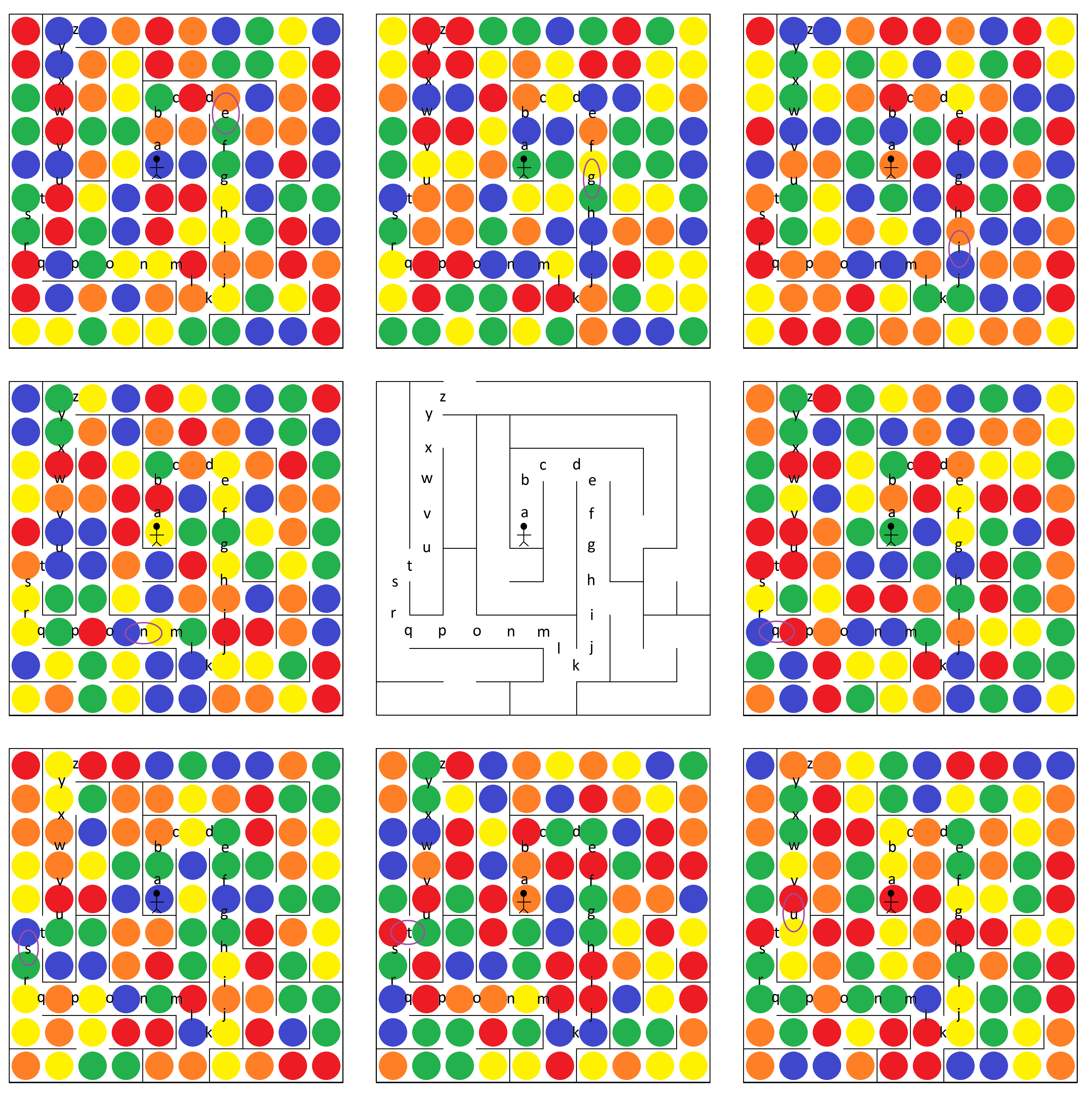| Home Register Puzzles Solve Teams Statistics Rules Solving Guide F.A.Q. Archive mezzacotta |
Solution: 5D. Befuddled
The first step to solving this puzzle is to realise that the coloured circles represent boards for a match-3 game similar to Bejeweled. This is an intuitive leap, but there are some clues; the visual appearance, the puzzle title ("befuddled" being a puzzled version of "bejeweled"), and the fact that there are no groups of three circles of the same colour in a row (but plenty of groups of two). For those not familiar with match-3s, the rules are simple. Each turn you may swap two adjacent gems. Then, any gem which is part of a group of three (or more) gems in a row is eliminated. Once eliminated, gems fall down into the spaces, and this can repeat until there are no more gems in a group of 3. Normally aditional randomly coloured gems also fall in from the top, to keep the game going, but for this puzzle that does not happen.
The next question is what to do with them? Well, if you've ever played Puzzle Quest, you might remember the challenges where you need to eliminate all of the gems on the board. If you try to do this, you will soon discover something even more convincing - that you can eliminate the entire board with a single swap! In fact, each board has a unique swap which can be made after which the entire board is eliminated. These are circled in purple in the image below, and the complete set of steps of the eliminations are shown on these pages:
The other element of the puzzle is the maze. The important thing to notice about the maze is that there are 26 steps within the maze along the path to the exit. That's a number any puzzle solver should be suspicious of, and suggests assigning a letter to each step. It's also clear that the maze is the same size as the gem boards and appears to also align with a 10×10 grid of cells. Note that because a move is a swap of two gems, the corresponding action in the maze is stepping from one cell to another, thus it makes the most sense to put the letters on the transitions between cells. This is also what gives 26 (rather than 27) steps, noting that stepping out of the maze does not correspond to a valid move on the gem boards and so does not need a letter.
The fact that every eliminating move is on the path to the exit is further confirmation of this correspondance. Putting these elements together, you can extract a letter from each gem board by finding the corresponding letter in the maze, as shown in the image below. This extracts the alphabetically sorted (and therefore also path sorted) letters "EGINQSTU".
From here you could simply anagram, but the ordering is also provided. Each board starts with a different number of eliminated gems from 3 to 10, and also finishes by matching that same number of gems all of the same colour. The higher numbered boards (such as the 10 match) are quite clearly contrived since it's highly unusual to match that many gems by chance. Placing the letters in order from smallest to largest initial/final match gives the answer: "QUESTING". This answer is a reference to the board elimination challenges in Puzzle Quest (since to solve this puzzle you have been "puzzle questing").

Design Notes
In testing, we found the hardest thing about the puzzle was the desire to look for a more complicated and integrated task to perform. Many testers wanted to find approaches where you swap gems all along the path to the exit to reveal a message. From a design point of view it was much simpler than this: the maze was added as a way to extract an answer from a Bejeweled puzzle board. The many alternative ways of linking the elements increase the difficulty of the puzzle in what we hope can be considered a fair way. The working step of this puzzle is difficult to do by hand, but should be possible on a spreadsheet with a bit of effort. For designing though we wrote code, which was also used to generate the worked steps given on the linked pages above.
